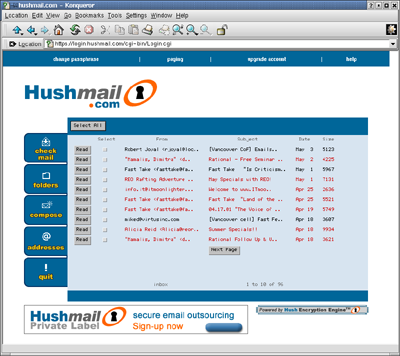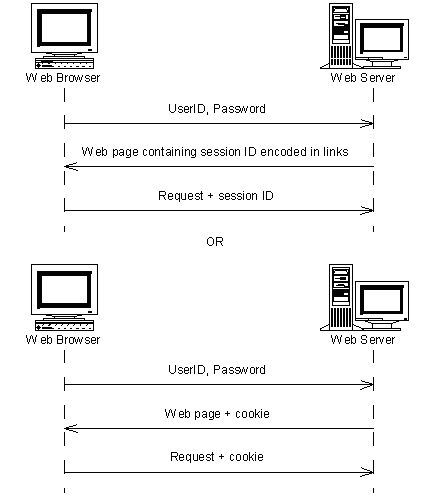Have you ever wondered just how Internet-savy your local Member of Parliament (MP) really is? Or, Internet aside, just how ‘in touch’ they are with the constituents they represent? After unsuccessfully attempting to bring an important issue to the attention of my local MP and waiting four months without a response, I decided to find out. This article presents the results of an informal experiment designed to reveal the responsiveness Canadians can expect from their own MP.
The Experiment
The idea was simple: send each MP a short, simple email, requesting a response to a few simple questions, and measure the response time. To provide a motive for response, the letter appeared to come from a constituent in the MP’s riding who had recently started using the Internet:
Hi there,
I’m a constituent in your riding, and I noticed your email address on the government web site (I’m fairly new to this web and email thing, so this is all still novel to me). Since I’ve never actually talked to you before, I was wondering if this is an easier way to bring issues to your attention? Do you read and reply to these emails, or do you have an assistant that takes care of that for you (as you probably get a lot of email)?
Just wondering, as I dive into this whole new world of instant communication, thanks for taking the time to respond…
Sincerely,
Brendon
Not to be too deceitful, the message’s return address contained my web site address; any MP office with enough interest and web know-how would be able to track me down and realize I was not, in fact, a constituent.
I sent the message out May 23rd, 2001 at 10:20 PDT to all of the MPs listed on the government’s Parlimentary web site, using blind carbon copy to ensure each recipient wouldn’t realize the message had been sent to all MPs. It should be noted that although there are 301 MPs, several MPs did not have an email address listed at the time: Mr. Pat O’Brien, Ms. Christiane Gagnon, The Hon. Herb Dhaliwal, The Hon. Charles Caccia, and Mr. Stéphane Bergeron. In some cases, email addresses have been added recently.
Survey Results
After just over a month, responses to the original message trickled off, leading me to assume that all MP offices likely to respond had responded. Disappointingly, only roughly a third of the Parliament responded either directly or via administrative aides; in total, only 128 of the 296 (301 MPs minus 5 that didn’t have an email address listed on the Parliament web site) MP Offices contacted in the original email responded. The following results were noted:
- Only 43.24% (128 of 296) of those contacted responded.
- Of those who responded, only 21.88% (28 out of 128) were the MPs themselves.
- The average age of the MPs who responded themselves was 50.64 years.
- The average age of MP whose offices responded was 51.73 years.
- The average age of all respondants was 51.49 years.
- The average response time from MPs themselves was 7.49 days.
- The average response time from MP offices was 2.23 days.
- The average response time from all respondants was 3.38 days.
- The NDP had the best percentage response both from MP offices, and the MPs themselves (see the charts).
The average age of MPs currently in office is 51.69 (see this Parliamentary age statistics page for more information); from the results it appears that the average age of MPs who responded themselves is slightly below the average, which is expected. In addition, the overall average age of MPs who responded, either themselves or via their offices, is also below the average age of the all MPs currently holding a seat.
Limitations of the Experiment
While the response rates are disappointing, there are several possible reasons that could explain the low response rates:
- The original email was sent ‘bulk’, using Blind-Carbon-Copy; if MP offices use spam filtering software, it’s unlikely that they ever saw the email.
- The original email was in English; MP offices for predominantly French regions may not have read the email, or found the claim of constituency credible, and thus ignored the letter.
- Priority; the email itself didn’t raise any real issue requiring address; some offices (as is apparent from some of the replies) receive a hundred or so emails a day, plus phone calls, plus faxes. Sheer volume may have prevented them from replying to such a frivolous email request.
An Interesting Side Note
Two days after sending the email request, I was contacted by the National Security Investigations Section of the RCMP; apparently, an unidentified MPs office became suspicious of the email and its contents. Constable Bill Jost, and Constable Mitch Rasche questioned me on my reasons for sending the email; I answered honestly, stating that the email was sent as a part of an experiment to research how ‘wired’ our MP offices were.
One question, “Why did you send your resume along with the email?”, disturbed me greatly. One of the MP offices that responded noted that it had found my web site (in the email headers); what’s disturbing is that either the RCMP, or the MP Office itself, couldn’t tell the difference between the contents of an email, and a separate web site. Even funnier was a comment from the RCMP noting they had difficulty finding my apartment; I informed them that if they had the original email, then they had my web site address, which has a map to my apartment.
At one point during the interview, Constable Rausche blurted out ‘Was it Gagliano’s office?’ when I responded that one of the respondant office had obviously figured out that my email was not entirely accurate. This leads me to believe that it was Alfonso Gagliano’s office which had instigated the investigation by the RCMP. All in all, the RCMP were satisfied with my responses; I don’t believe they took the case very seriously.
Conclusions
Overall the experiment demonstrated that the average Canadian cannot contact their MP office and expect a response in a reasonable length of time, if at all. My point here is not to ridicule the MPs themselves, or their offices, but rather point out the need for a more effective and interactive form of government. Our current form of government was built on the assumption that the general public did not have access to information on current events, or mechanisms to have their opinion communicated efficiently; with modern telecommunications technology, this is no longer the case.
That is not to say that we don’t still require MPs; we still need people to guide the population (who may not necessarily be aware of the impact of proposed legislation). However, we do need a way to allow people to interact with their government more directly; currently, the average citizen can only directly affect the government at election time. I do not consider the press to be a direct method for interacting with government, as it is inevitably restricted by corporate interests, and availability of airtime, newsprint, or bandwidth.
As a citizen, I should be able to interact with my MP during question period, vote continuously on proposed legislation, and discuss the issues in a national forum. Currently, MPs aren’t even allowed laptops in the House, and the Government of Canada web site hosts no independent forum on topics of the day. It’s time we used our technology to make government reflect the true wishes of the people.


